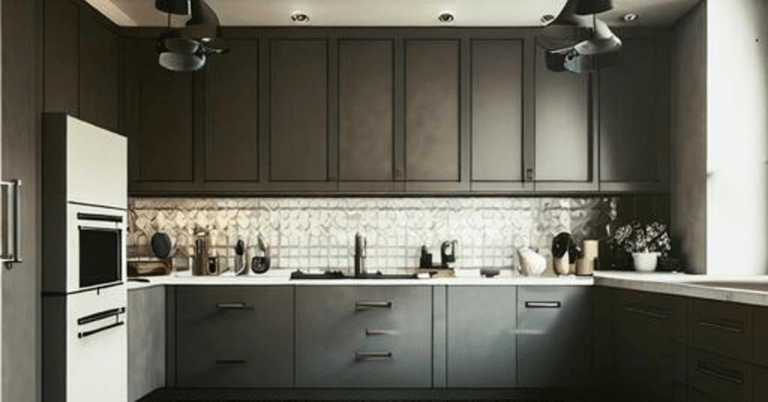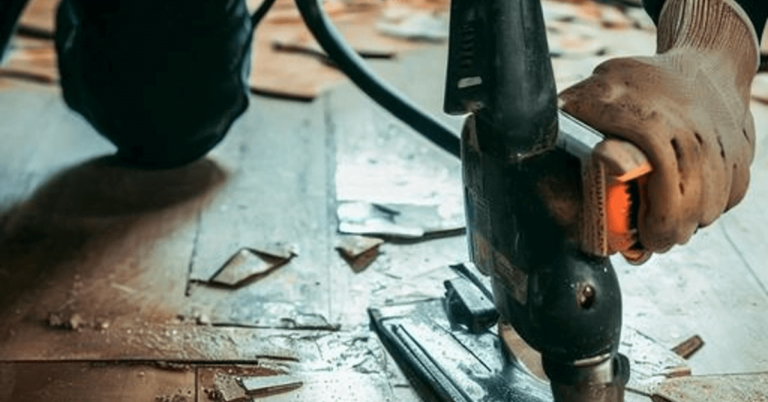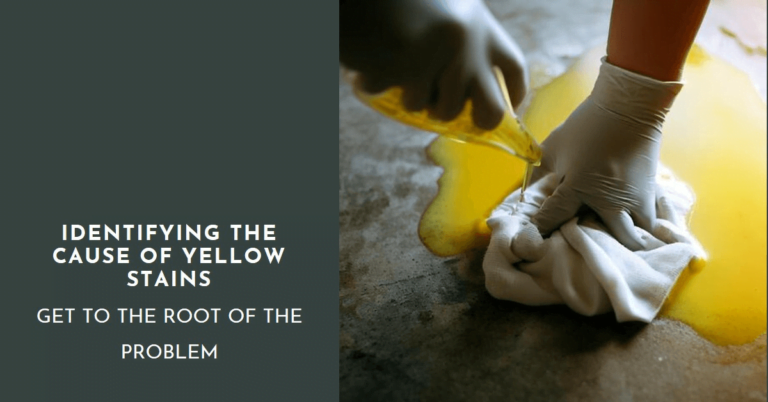How To Cover Linoleum Flooring
Covering your linoleum flooring is an easy and cost-effective way to update the look of your home. Whether you want…
Covering your linoleum flooring is an easy and cost-effective way to update the look of your home. Whether you want to paint your floors or install new flooring over your existing linoleum, there are several options available to you.
In this article, we will guide you through the process of covering your linoleum flooring, providing you with tips and tricks along the way.
Before beginning any project, it’s important to assess the condition of your linoleum flooring. If your linoleum is in good shape and has no major damage, you may be able to paint or cover it without needing to remove it. However, if there are any cracks or tears in the linoleum, it’s best to remove it before covering it with new flooring.
With that being said, let’s dive into the steps you’ll need to take to cover your linoleum flooring and transform your space.
Assessing Your Linoleum Flooring
Before you jump into any DIY projects, it’s important to take a closer look at what’s currently on your floors.
Assessing the condition of your linoleum flooring is the first step in determining how best to cover it. Look out for any cracks or damages on your flooring that could potentially cause issues when laying new flooring. Repairing cracks and damages should be done before attempting to cover the linoleum flooring.
Another important factor to consider when assessing your linoleum flooring is its overall appearance. Are there any stains, scratches, or discolorations that need to be covered? If so, take this into consideration when choosing a new flooring option.
Depending on the severity of the stains, you may need to use a primer or sealer before laying new flooring to ensure that the stains don’t seep through and ruin your new floors.
Once you’ve assessed the condition of your linoleum flooring and determined what needs to be done to prepare it for new flooring, it’s time to choose a new flooring option.
There are many options available, including vinyl planks, laminate, and tile. Keep in mind the overall style and design of your home when making your choice.
With the right preparation and flooring choice, covering your linoleum flooring can be a simple and cost-effective way to update your home’s look.
Preparing Your Floors for Covering
Get your floors ready for the new layer by thoroughly cleaning and smoothing out any imperfections. This is an important step to ensure that your new flooring adheres properly and looks its best.
To begin, sweep or vacuum the linoleum flooring to remove any loose debris. Next, use a cleaning solution that’s safe for linoleum to clean the surface. Avoid using harsh chemicals that could damage the linoleum. You can find cleaning solutions specifically designed for linoleum at most hardware or home improvement stores.
After cleaning the linoleum, inspect it for any imperfections or damages. If you find any raised edges, bumps, or scratches, use a floor scraper or sandpaper to smooth them out. This is crucial because any bumps or scratches can cause the new flooring to become uneven or not adhere properly.
Once you have finished smoothing out any imperfections, thoroughly clean the linoleum once more to remove any dust or debris left from the sanding process.
Now that your linoleum flooring is all set, it’s time to gather the necessary materials for covering it. Depending on the type of flooring you choose, you may need adhesive, underlayment, or other materials. Make sure to read the manufacturer’s instructions carefully before purchasing any materials to ensure that they’re compatible with your linoleum flooring.
With the right preparation and materials, you’ll be ready to cover your linoleum flooring and give your space a fresh, updated look.
Painting Your Linoleum Floors
Let’s give your space a new look by painting your floors. If you’re looking for a way to change the appearance of your linoleum flooring without having to replace it entirely, painting is a great option.
Not only does it give you the chance to add some color to your space, but it’s also a cost-effective way to achieve a brand new look. Color options are virtually limitless when it comes to painting your linoleum floors.
You can go for a bold and bright color to make a statement, or you can opt for a more neutral tone that complements your existing decor. You can even create a pattern or design using stencils or painter’s tape. The options are endless, and the choice is entirely yours.
Cost comparison is another advantage of painting your linoleum floors. Compared to the cost of replacing your flooring entirely, painting is a much more affordable option.
You can achieve a whole new look without having to break the bank. Plus, you’ll save money on installation and labor costs, as painting your floors is something you can do yourself.
With just a little bit of time and effort, you can transform your space and give it a fresh new vibe.
Using Peel-and-Stick Vinyl Tiles
If you’re looking for a quick and easy way to give your floors a new look, using peel-and-stick vinyl tiles is a great option for you. Not only is it affordable, but it’s also easy to install and comes in a variety of colors and designs.
Here are three reasons why peel-and-stick vinyl tiles are a great option for covering linoleum flooring:
Color options: Peel-and-stick vinyl tiles come in a wide range of colors and designs, allowing you to choose the perfect shade to match your decor. Whether you’re looking for a bold, bright color or a more subdued pattern, you’re sure to find something that works for you. And if you change your mind later on, it’s easy to remove the tiles and replace them with a new color or design.
Durability comparison: Peel-and-stick vinyl tiles are more durable than linoleum flooring, making them a great choice for high-traffic areas. They’re resistant to scratches, stains, and moisture, so they’re perfect for kitchens, bathrooms, and other areas where spills and messes are common. Plus, they’re easy to clean and maintain, so they’ll look great for years to come.
Easy installation: Installing peel-and-stick vinyl tiles is a simple process that can be done in a weekend. All you need is a clean, dry surface to work with and a few basic tools like a utility knife and a straight edge. And because the tiles are self-adhesive, there’s no need for messy glues or adhesives. Just peel off the backing and stick the tiles in place.
Overall, using peel-and-stick vinyl tiles is a great way to cover linoleum flooring. With so many color and design options, as well as their durability and ease of installation, they’re a smart choice for any homeowner looking to update their floors.
Installing Laminate Flooring Over Linoleum
Looking for a budget-friendly way to update your floors? Consider installing laminate over your existing linoleum for a fresh, new look.
Laminate flooring is a popular choice for homeowners because it is more affordable than hardwood and can mimic the look of natural wood or stone. Additionally, it is durable and easy to clean, making it a practical option for high-traffic areas.
Before installing laminate flooring over your linoleum, it is important to assess the condition of your current flooring. If there are any tears or bumps in the linoleum, it may need to be removed before laying the laminate. You should also make sure that the linoleum is thoroughly cleaned and free of any debris.
Once the linoleum is prepped, you can begin laying the laminate flooring on top using an interlocking system.
While installing laminate over linoleum can be a cost-effective and easy way to update your floors, there are some potential drawbacks to consider. The added layer of flooring can raise the height of your floors, which can be an issue when transitioning to other rooms or doorways. Additionally, if your linoleum is not properly prepped or if moisture gets trapped between the layers, it can cause damage to both the linoleum and the laminate.
Overall, it’s important to weigh the pros and cons before deciding if this flooring option is right for you.
Conclusion
Overall, covering linoleum flooring can be a great way to update the look of your home without breaking the bank.
Whether you choose to paint your floors or use peel-and-stick tiles, it’s important to properly assess and prepare your floors beforehand. This will ensure that your new flooring will adhere properly and last for years to come.
If you’re unsure about which method to use, consider consulting with a professional or doing some research beforehand.
With the right tools and preparation, you can transform your linoleum floors into a beautiful and functional part of your home. So don’t be afraid to get creative and try something new!




